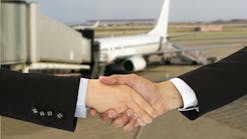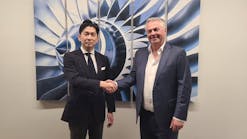Pilot Error Blamed in Dale Earnhardt Jr. Plane Crash, Federal Investigators Say
Before Dale Earnhardt Jr.’s plane crashed on a Tennessee runway, his pilots discussed having trouble seeing the airport on their initial approach and came in too fast, federal investigators said.
“They also discussed traffic in the area and were maneuvering around clouds, which may have increased the pilots’ workload,” according to the final report on the crash by the National Transportation Safety Board.
As the flight crew continued to approach Elizabethton Municipal Airport on Aug. 15, 2019, they crossed a ridge line 710 feet above ground, triggering a terrain awareness and warning system alert, according to the report.
“Further, the flight crew made several comments about the airplane flying too fast and allowed the airspeed to increase well above the reference speed for the approach,” NTSB investigators said.
To slow the airplane for landing, the pilot “partially extended the speed brakes when the airplane was below 500 feet, which is prohibited in the airplane flight manual,” according to the NTSB report. “Five seconds before touchdown, the airplane’s descent rate was 1,500 feet per minute, which exceeded the maximum allowed for landing ... of 600 fpm.”
And, when the airplane first touched down, the pilot didn’t extend the speed brakes, “which the landing checklist required.” He instead tried to deploy the plane’s thrust reversers, which failed to unlock because the plane “bounced and was airborne again before the command could be executed.”
The plane touched down four times before crashing.
The NTSB blamed the crash on the pilot continuing “an unstabilized approach” and the flight crew decision not to do a go-around before touchdown. Those factors caused the “bounced landing, a loss of airplane control, a landing gear collapse” and the plane leaving the runway.
The pilot’s failure to deploy the speed brakes during the initial touchdown also contributed to the crash, investigators said.
Earnhardt family’s escape from fiery jet
Earnhardt told federal investigators that after the Cessna 680 business jet crashed and smoke billowed toward the passengers, he and his pilot couldn’t budge an emergency door open, The Charlotte Observer previously reported.
Soon they saw flames shooting from the bathroom.
Holding his toddler daughter, Isla Rose, Earnhardt asked co-pilot Jeff Melton to try the main cabin door.
It, too, was stuck. After a second try, Melton kicked the door open wide enough to slip through. The opening was the size of a conventional oven, Earnhardt said.
Earnhardt handed his daughter to Melton, then both dad and daughter squeezed out of the plane moments before fire spread through the cabin.
Cheryl Campbell, a witness on the ground, said that after the crash, “immediately the rear of the aircraft burst into flames.”
Only three people in the plane were hurt, however, and with only minor injuries at that, according to the NTSB.
Earnhardt Jr. was among those treated for minor non-life-threatening injuries at a nearby hospital, the Observer reported at the time.
In an apparent reference to Earnhardt Jr., Campbell said she stayed by his side until paramedics arrived.
“He tried to get up and could not and was asking if his wife and child were out and OK,” Campbell said in a handwritten statement to the NTSB. Campbell had spent 25 years in the Air Force and the past 21 years as a flight attendant.
“I assured him I checked on his wife and his child and both were OK,” Campbell wrote.
Speed a possible factor, cockpit recorder shows
Earnhardt’s wife, Amy, and their dog, Gus, were also aboard the plane, which departed with nine passengers and two crew members from Statesville Regional Airport.
JRM Air LLC, a subsidiary of Earnhardt’s Mooresville-based JR Motorsports team, owned the plane, federal records show.
According to previously released NTSB documents, pilot Richard Pope of Statesville told investigators “he was carrying extra speed on the approach because the airplane ‘slows down so easy.”’
Pope said their initial touchdown was “pretty hard” and the airplane “came back up” off the runway.
Melton, the co-pilot, concluded his interview with federal officials by saying “he had soul-searched the event many times since the accident and could not explain why the airspeed on final became high and the approach became unstable,” according to a memorandum by Ralph Hicks, a senior air safety investigator with the NTSB.
Investigators found no mechanical issues, according to the documents.
The documents include transcripts of interviews by NTSB investigators with those who were aboard the plane and with witnesses on the ground.
According to those interviews, the weather was fine as the pilot and co-pilot maneuvered around clouds and other planes and began looking for landmarks — “ridgelines” in pilot-speak — to help them find the airport. They’d flown there many times.
The initial touchdown was “pretty hard,” and the plane bounced back up, and then a second time.
The third touchdown occurred about halfway down the runway.
That’s when the crew reported they were both “on the brakes” and the airplane was skidding to the right. The right main landing gear appeared to have collapsed. The pilots again reported the plane skidding, “and it did not feel as if the airplane was decelerating at all.”
“Hold on,” the pilot and co-pilot yelled to the passengers.
———
©2020 The Charlotte Observer (Charlotte, N.C.)
Visit The Charlotte Observer (Charlotte, N.C.) at www.charlotteobserver.com
Distributed by Tribune Content Agency, LLC.



